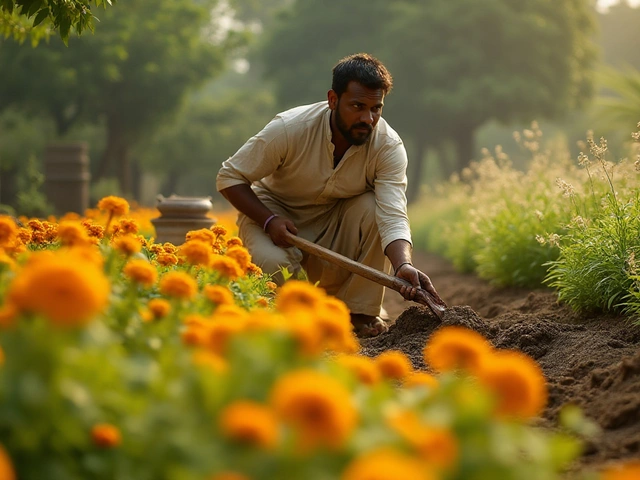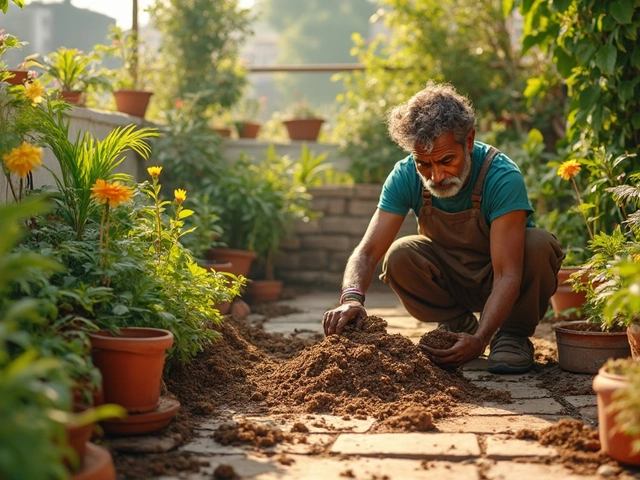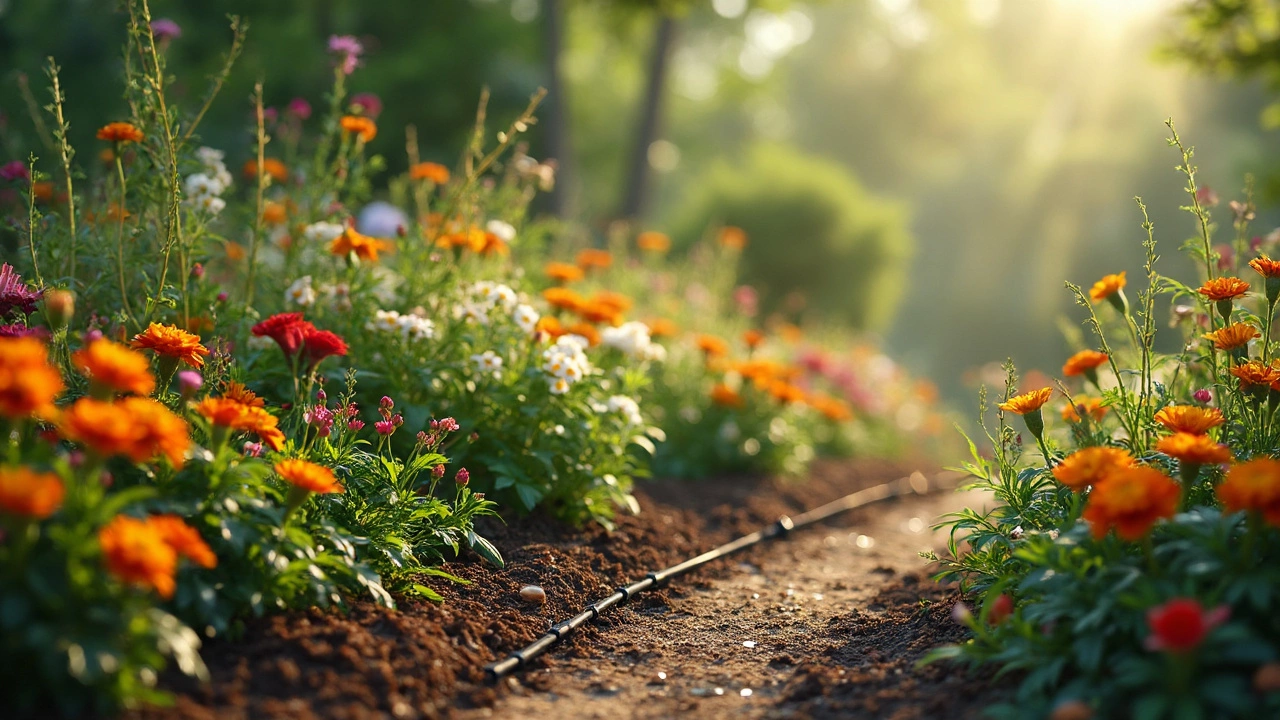Mulch Basics: Why Every Indian Garden Needs It
Mulch is simply a layer of material spread over the soil surface. It might look like a simple cover, but it does a lot of heavy lifting for your garden. From holding moisture to stopping weeds, mulch is the unsung hero that lets plants focus on growing instead of fighting a harsh environment.
Top Benefits of Mulching
First, mulch saves water. In hot Indian summers, the soil can dry out fast. A 2‑3 inch blanket of mulch cuts evaporation, meaning you water less and your plants stay greener. Second, it smothers weeds. When a thick layer blocks sunlight, most weeds can’t sprout, saving you time weeding. Third, mulch improves soil health. Organic mulches break down into humus, feeding microbes that keep the soil structure light and fertile. Finally, it regulates temperature, keeping soil cooler in scorching heat and warmer on chilly mornings.
Choosing the Right Mulch for Your Site
India’s climate varies, so pick a mulch that matches your zone and plant needs. For vegetable beds, straw, dried leaves, or coconut coir work well – they decompose quickly and add nutrients. Fruit trees love bark chips; they break down slowly, giving long‑term protection. If you need something that lasts years and won’t rot, consider pea‑gravel or recycled rubber. Remember, inorganic mulches don’t add nutrients, so you may still need regular compost.
When buying, look for clean, weed‑free material. Fresh wood chips can tie up nitrogen as they decompose, so mix them with a bit of compost or a nitrogen‑rich fertilizer to keep your plants happy.
How deep should you spread mulch? Aim for 2‑3 inches for most beds. Too thin and it won’t block weeds; too thick and it can prevent water from reaching roots. Around tree trunks, keep a 4‑inch radius but leave a small gap at the base of the trunk to avoid rot.
Applying mulch is quick. First, clear existing weeds and smooth the soil. Then, lay the mulch evenly, tamping lightly with your hands or a flat board. Water the area after spreading; this helps the mulch settle and start working right away.
If you’re mulching containers, use a thinner layer—about 1‑inch of lighter material like shredded paper or coco coir. This keeps drainage good while still offering moisture retention.
Mulch isn’t a set‑and‑forget item. Over time it breaks down and loses volume. Check it every season and top up as needed. Refreshing mulch also renews its weed‑blocking power and adds fresh organic matter to the soil.
Got a garden that’s already packed with weeds? Lay a thick sheet of cardboard or newspaper first, then cover with your chosen mulch. This creates a bio‑barrier that kills existing weeds while still letting water pass through.
In short, mulch is a low‑cost, high‑impact tool that works wonders in Indian gardens. Pick the right type, apply the right depth, and keep it refreshed. Your plants will thank you with stronger growth, fewer weeds, and healthier soil.
Drip Irrigation Under Mulch: Is It Worth It?
Discover the perks of placing drip irrigation under mulch for your garden. Explore how this combination helps conserve water, improve soil health, and ensure efficient plant growth. Learn practical tips and reasons to consider this method for a more sustainable gardening experience.
About
Drip Irrigation
Latest Posts


Tips to Firm Up Loose Garden Soil: Expert Techniques
By Alden Thorne Dec 9, 2024

Indian Vegetarians and Eggs: Myth, Culture & Diet
By Alden Thorne Oct 14, 2025

Rarest Flower in India: What Makes the Neelakurinji So Unique?
By Alden Thorne May 21, 2025

